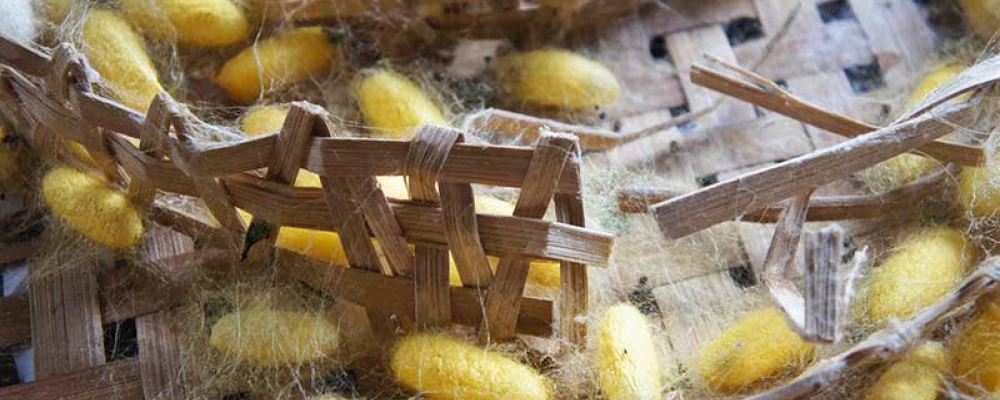
Ethical silk fabrics and what the complex terminology really means
Over on our textile shop Offset Warehouse, we stock a varying range of ethical and sustainable silk fabrics. In fact, everything we choose to retail has been carefully considered for the benefits the textile brings to people and planet. When it comes to silk, there are of course animals involved in the story too, as silk is produced from the cocoon of a caterpillar that has transformed into a moth.
This is an exceedingly complex subject though: on top of the different silk weaves you have to consider when designing, you may also be wanting to consider the ethics and sustainability of your fibre, and within that, you have many different silkworm species, different cultivation methods and different processing techniques to consider ensuring you commit to your values.
In this article then, along with highlighting the beautiful silk textiles in our range, we provide you with a sort of glossary of the terms you will come across when sourcing. What makes silk a sustainable fabric? How can silk be ethical? Continue reading to find out.
How are silkworms reared
Domesticated silk:
Silkworms start their life in an incubator as they need 10 days at a constant temperature to hatch. Once the pinhead-sized eggs hatch, the silkworms immediately start to feed on fresh leaves (mulberry, if they are the Bombyx mori species), which are picked fresh off the trees – silkworms will die if fed with leaves not freshly picked on the day. This is where silk production can become energy intensive, and why silkworms are generally reared in captivity as semi- or full-domestication: silkworms feed constantly, twenty-four hours a day seven days a week, with no rest periods or sleep.
They are fully grown by the twenty-eighth day, growing constantly into a long caterpillar. Fully grown, they can be as long as three inches, and as thick as a pencil (dependent on the species). On day 29, the silkworms start the second part of the cycle, which is the cocooning. Each worm starts to cocoon the silk it produces and wraps itself in the silk thread to form a peanut-shape case.
Sericulture rearing techniques and instructions [Silks Central Silk Board via Directory of Sericulture Technology]
Different types of domesticated rearing [Feeds Free]
Find other pros and cons in our article from 2014 [Offset Warehouse].
Note, even wild silkworms (as noted below) can be partially domesticated. Due to 5000+ years of silk production, the majority of silk moth species do not have the capability to fly or find food for themselves.
Learn about domesticated rural silk cultivation (sericulture) from Mulberry 001 in India.
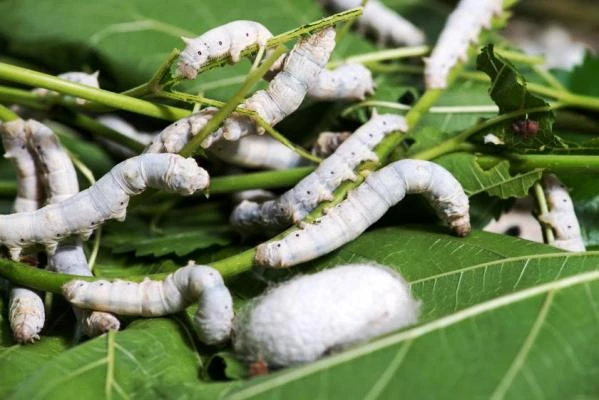
Conventional silk:
Silk produced conventionally is usually where worms are bred and reared in captivity. It will have both high volume input of feed e.g. mulberry leaves, and high volume output e.g. lots of cocoons.
The feed, meaning the trees and land that the farm is situated on, will use chemical inputs including pesticides, herbicides, fungicides and synthetic fertilisers.
The processing will also use chemicals for removing the sericin gums from the fibre (that make it stiff), fibre bleaching, additives including metallic salts to increase weight, add density, and improve draping quality, plus finishing that will create many different textures. You will also have chemical dyes being used.
As this can be produced more intensively, and then the fibre processed more mechanically with machines then the cost is, of course, cheaper. If you are sourcing silk and come across an "ethical" silk fabric that appears to be the same cost as a conventional cloth, question the producer on the cultivation and processing methods used.
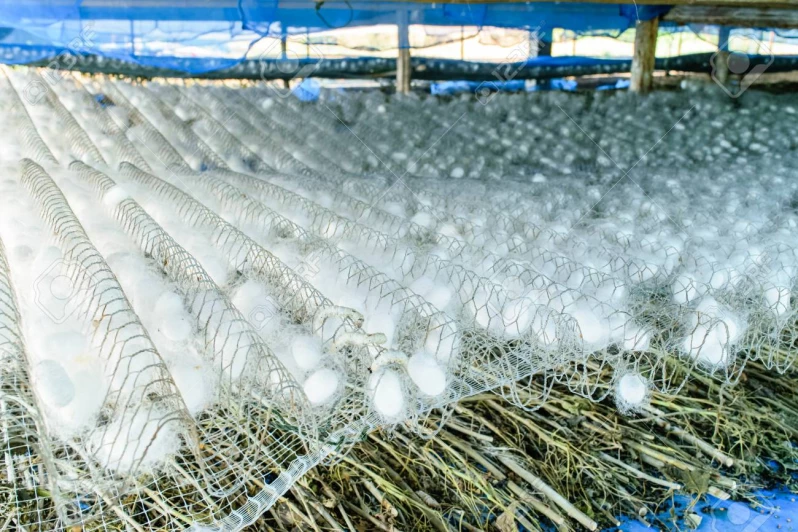
Peace or 'ahimsa' silk:
Eggs are refrigerated for 9 months until the season is ready. With wild silk, the caterpillars will have natural hibernation as they live outdoors. After approximately two weeks, they will be warm and hatch.
It then takes another four to six weeks depending on the temperature and caterpillar species for the hatchlings to grow to mature adults. After they have spent this time feeding, they are ready to spin their transformatory cocoon, which takes around three days. After two weeks, the transformation inside the cocoon is complete and the moth is ready to emerge.
The emergence, mating and laying of eggs completes the animal's life span; the emergence from the cocoon to natural death takes around one week.
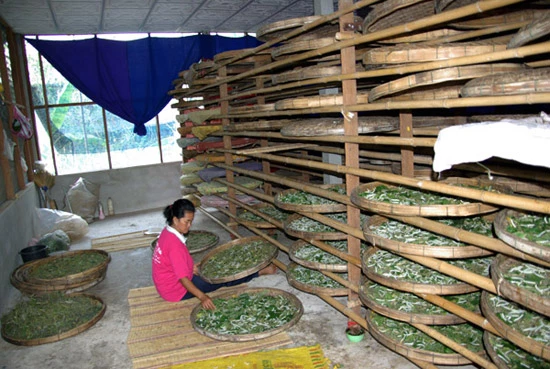
Peace silk is where the moth is allowed to pierce the cocoon and leave, while "conventional" silk is where the moth will be boiled or stipled inside the cocoon. Peace silk is therefore a shorter fibre length with many strands, while conventional silk is a filament of around 1000-1500 metres long.
You may also find the term 'ahimsa'. Ahimsa means non-violent, which is where the term "peace" comes from. It was popularised as a term by Ghandi, and along with the taking back of control in weaving cotton khadi cloths, ahimsa silk is processed and woven generally by rural communities within homes on small power looms.
Note, even though non-violent sericulture uses the approach where moths continue their lifespan, as noted above, the moths will die a natural death usually within the week. They do not live their lives outside of the sericulture farm, rather playing and mating within where the sericulturist has kept them in captivity. Some farms will collect the dead moths to be used as feed/compost.
Learn more about the process when we met the silkworms of our producer back in 2015 [Offset Warehouse].
Hear about the distinctions between Ahimsa, peace and non-violent silk in this Lesson from ahimsa silk producer Mr Rajaiah Kusuma. You can also learn how to source fabrics with transparency of peaceful production in this Lesson from silk retailer Seidentraum.
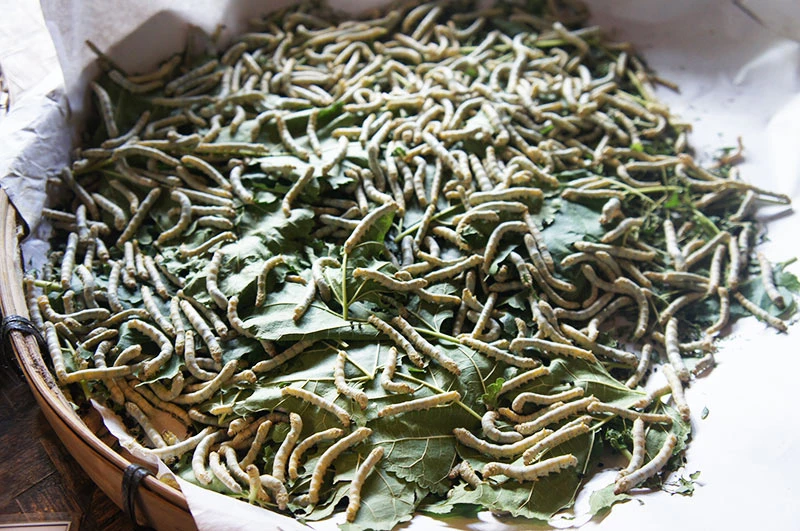
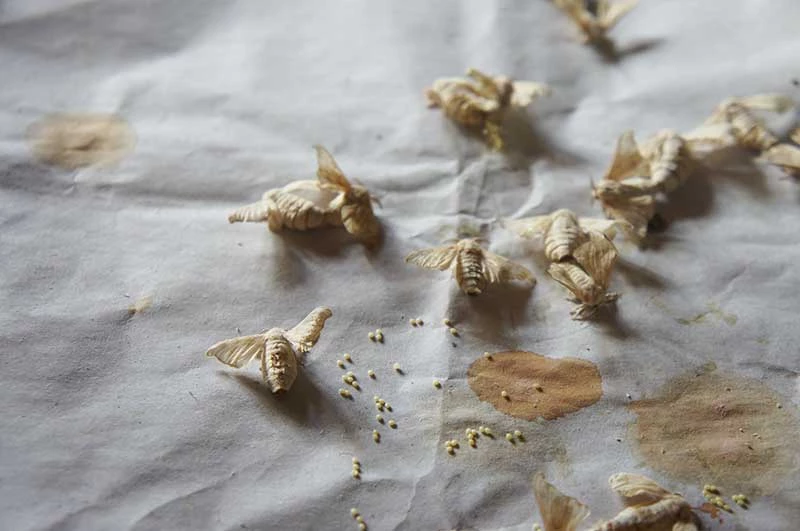
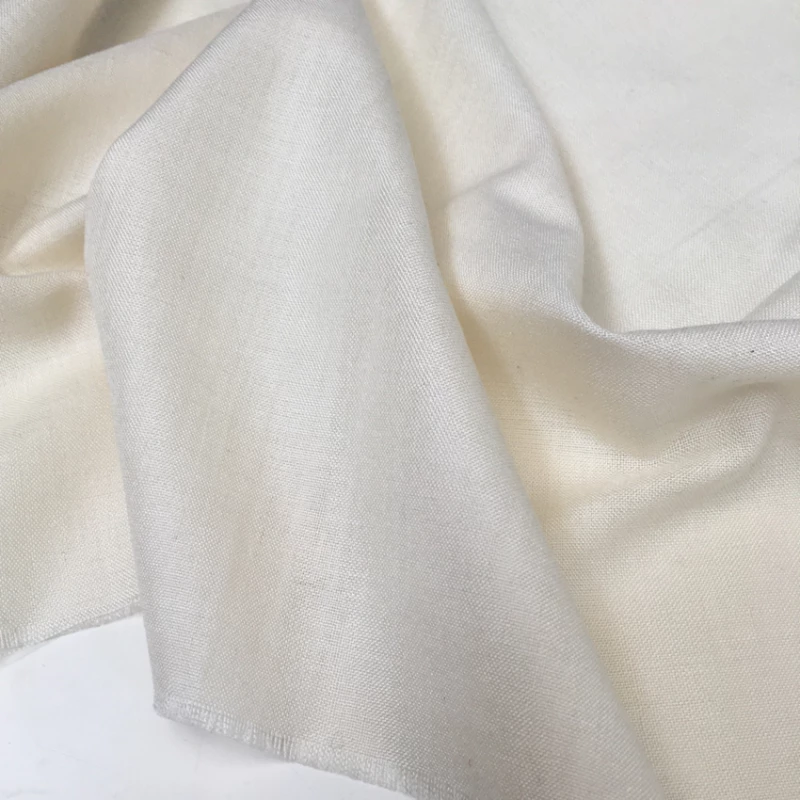
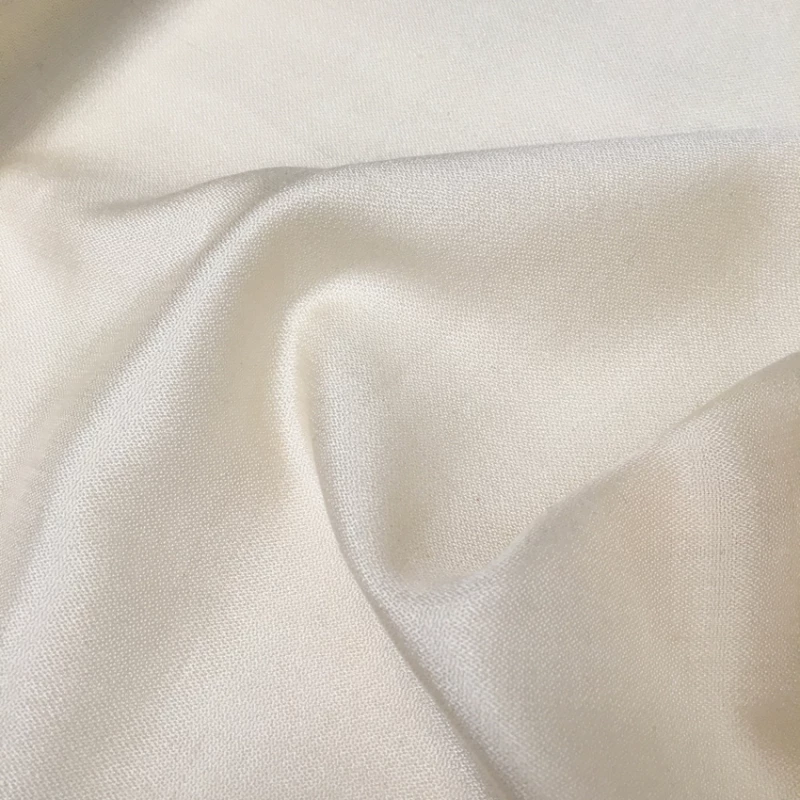
Organic silk:
The silk is cultivated using techniques consistent with Organic Cultivation Standards. It can be certified, or non-certified. These refer to feeding the silkworms on mulberry leaves and other plants that are not sprayed with pesticides, herbicides or fungicides, and synthetic fertilisers are not use on the land. Another important organic standard is that the silkworms are not fed hormones (to make them bigger). As with organic cotton and prohibiting non-GMO, organic silk prefers that the raw inputs are natural.
Other organic standards refer to the processing stages, where the silk receives no additives, bleaching or finishes at all or that do not use harmful substances.
Organic does not prevent intensive rearing, where the feeding trees are close and are covered with nets to prevent silkworms from leaving (and other animals such as birds "stealing" the caterpillars). As with other organic fibres, it is a referral to the cultivation methods only, rather than the ethics. This is where "organic" and "peace silk" working in tandem is where you would have both an ethical and sustainable silk.
You can get a Soil Association certified organic peace silk fabric from Botanical Inks. This fabric comes from silkworms reared on organic mulberry orchards in Hertfordshire, UK.
Learn about how a silk can be traceable and organic, and support sustainable livelihoods in Thailand, in this Lesson from Chul Thai Silk.
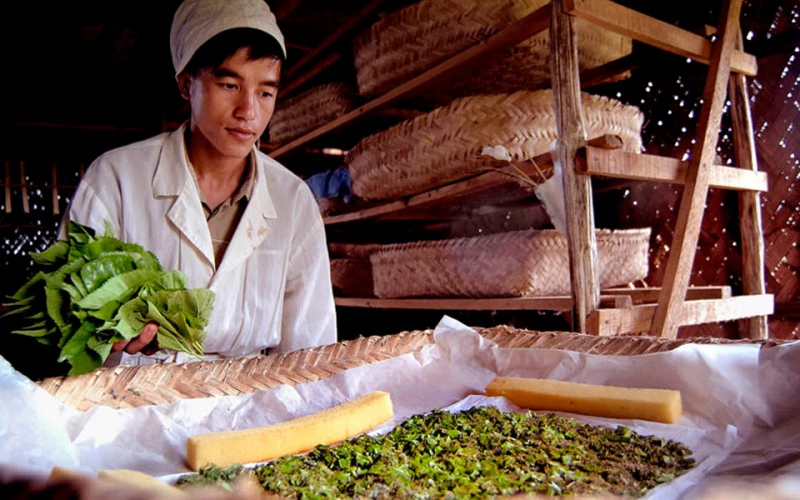
Non-certified organic silk:
As with the above, the silk is cultivated using techniques consistent with Organic Cultivation Standards. However, it has not been certified as such. Certifications can be costly, so for a small producer, the cost may not seem a viable investment especially if there is no demand from a buyer.
If you are a fashion brand looking to support social projects and increase resilience of communities - along with ethical and sustainable production - you may consider applying for a certification yourself on behalf of the producer. This would allow the producer to fetch a premium price; though this would benefit other designers too, you will have built a strong, trusting and supportive relationship with your producer.
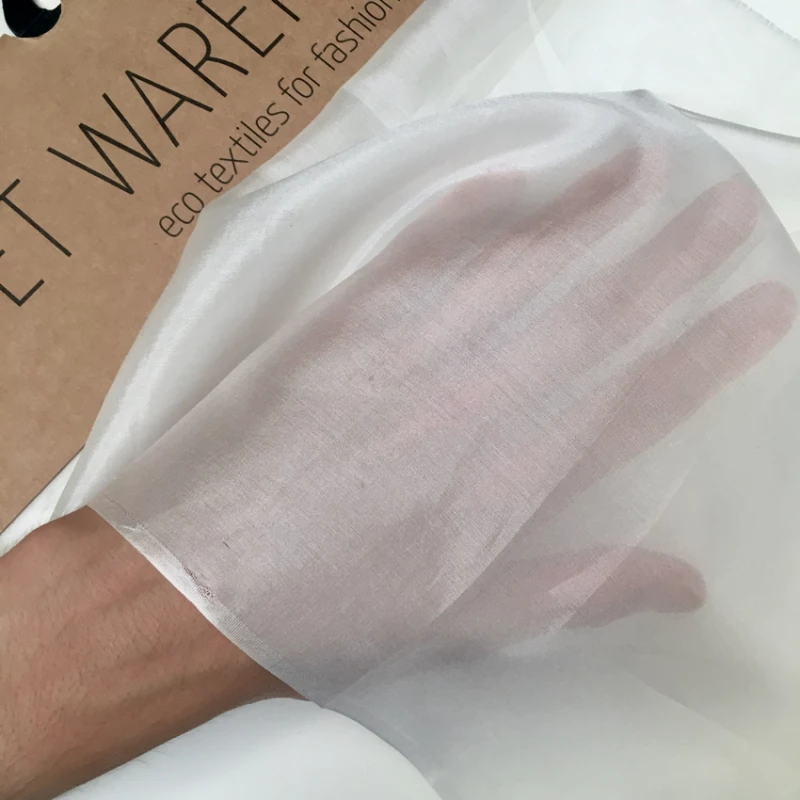
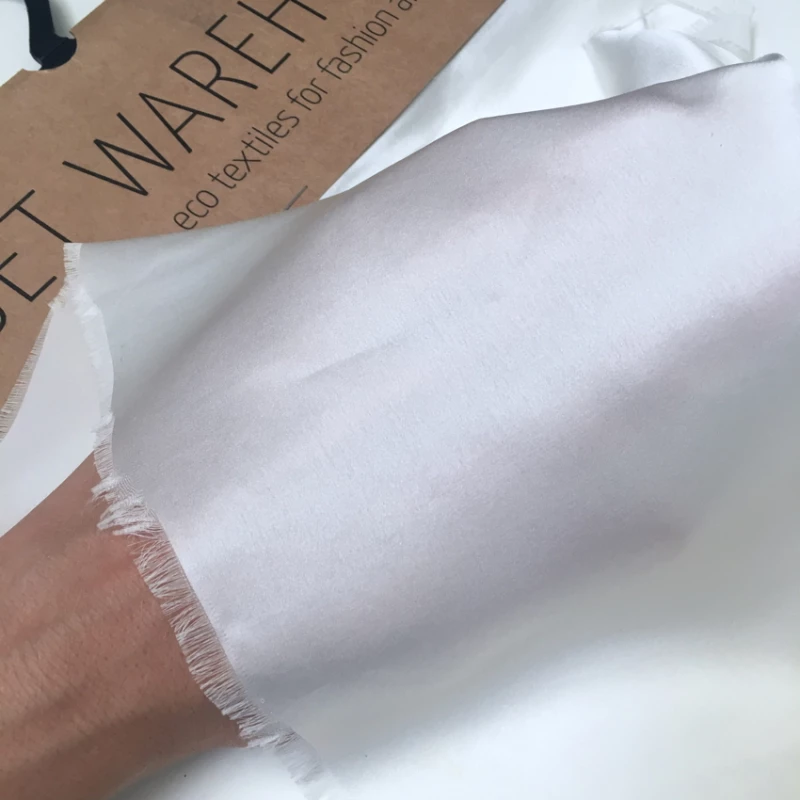
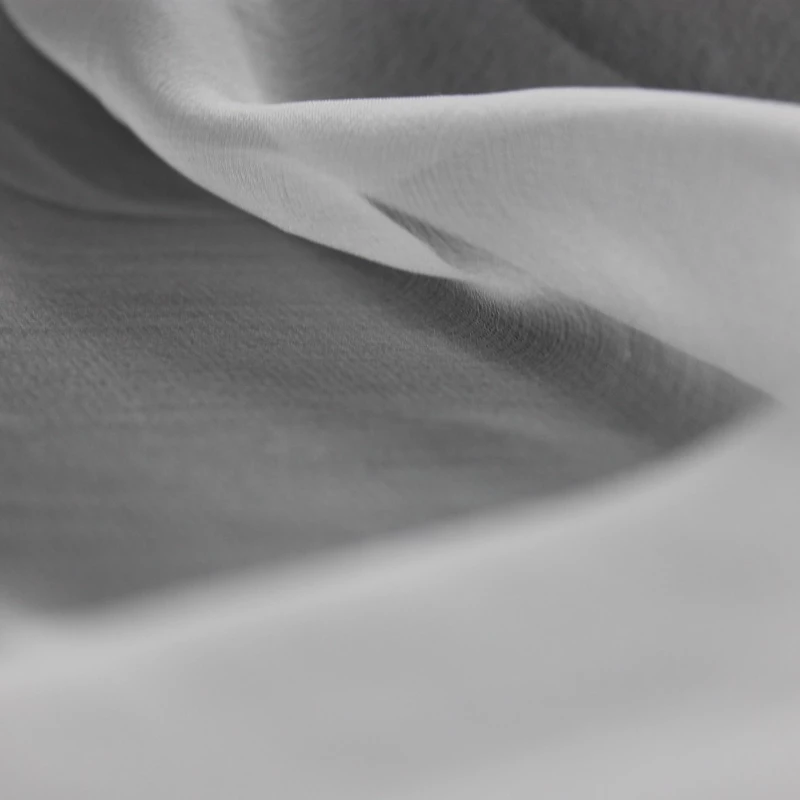
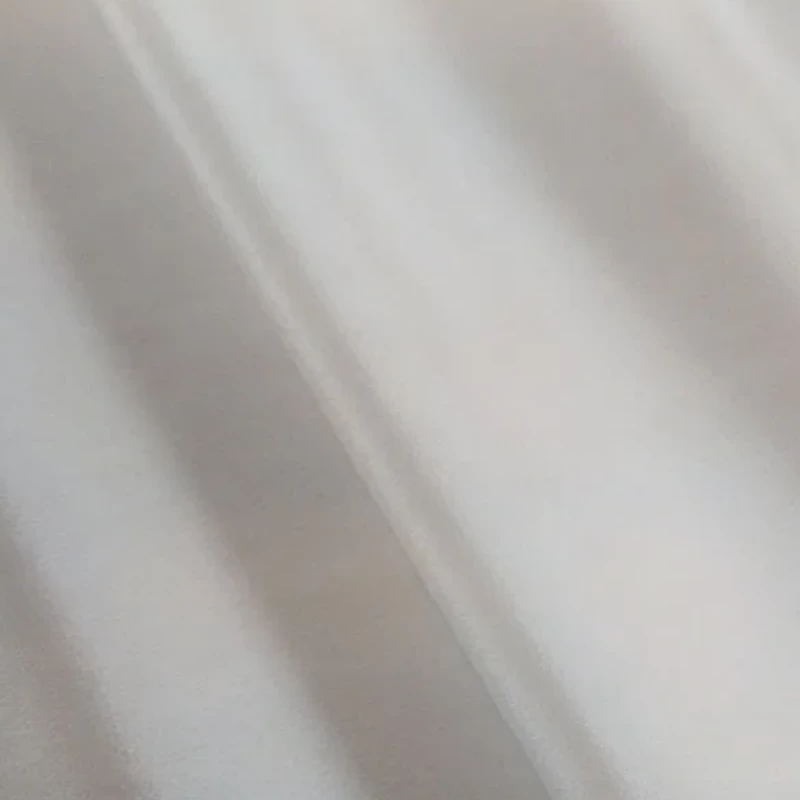
1. Ivory Charmeuse Silk Satin - Lightweight
2. Ivory Charmeuse Silk Satin - Mediumweight
3. Super Fine Silk Chiffon
4. Ivory Crepe de Chine - Lightweight
Fair trade silk:
This refers to the production segment of silk fabric: how have the fibres been spun and woven into cloth. Fair trade can be certified, as with the World Fair Trade Organisation or Artisans Cambodia - found in our vibrant organza, taffeta and raw silks. Or, it can be non-certified yet with evidence of fair production, but this would need personal investigation or a strong relationship with a community liaison.
Wild silk:
There are hundreds of species of silk moths that exist wild, and now several species that have been domesticated for conventional semi or full cultivation. Wild silk is naturally ethical as the silkworms are left to eat whatever they like, are able to roam wherever they feel, and are only collected as cocoons off trees.
Note, however, that the cocoons can then be steamed to kill the moth inside, with the thread reeled from the cocoon for its long filament fibre. When sourcing wild silk, if you want a fully ethical silk, ensure that the production methods are to peace silk standards.
Wild silk is often drawn out as a short fibre and processed into a non-woven fabric [Material District].
There is even the suggestion that wild silk "farms" can help conserve forest in certain parts of the world [Earth.Com]
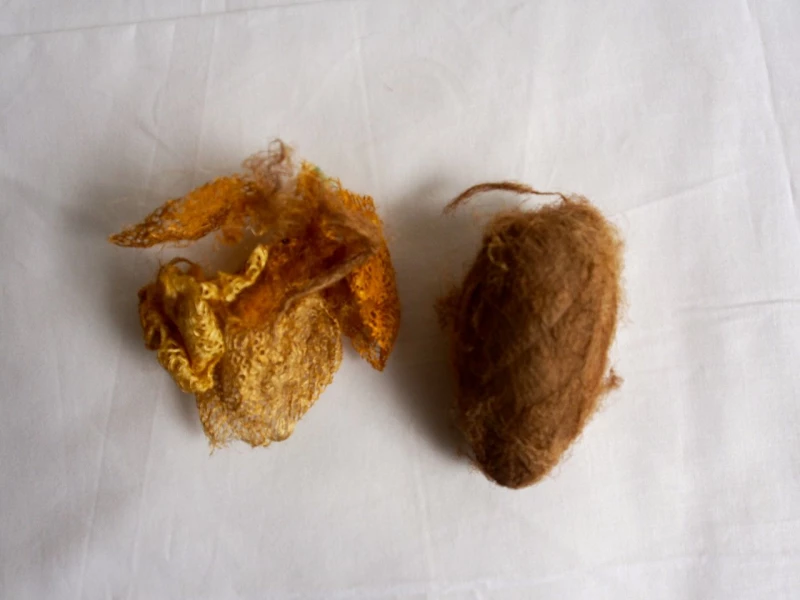
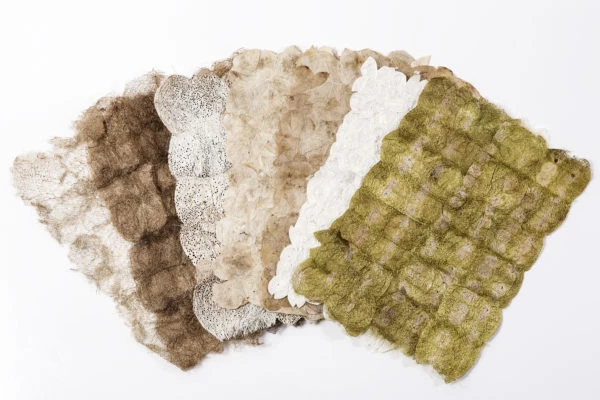
Tussah or "tussar" silk:
Tussah silk is wild silk that is typically gathered in the jungle from cocoons of wild silk moths. Thus wild silk can be considered "organic", as almost all wild silk is wildcrafted; that being said, only practices consistent with organic farming techniques are used in the raising of the Paperlike Tussah Silk and Soft Golden Tussah Silk that we stock. As it is a wild silk, it is usually tribal communities that will tend to the trees and cocoons.
The caterpillars are tended outside on plantings of oak or jamun trees, which is what gives the tussah silk its natural creamy beige colouring. Due to the wild nature of the feed, wild and tussah silk generally does vary in hue. You will find that a silkworm that feeds on oak trees produce a darker cocoon - and therefore thread - than a silkworm that feeds on mulberry leaves. There is also a difference in colour and texture if a silkworm eats white mulberry or black mulberry leaves; the caterpillar will thrive on white mulberry, but will produce a coarser thread when fed on black mulberry [Morus Londinium].
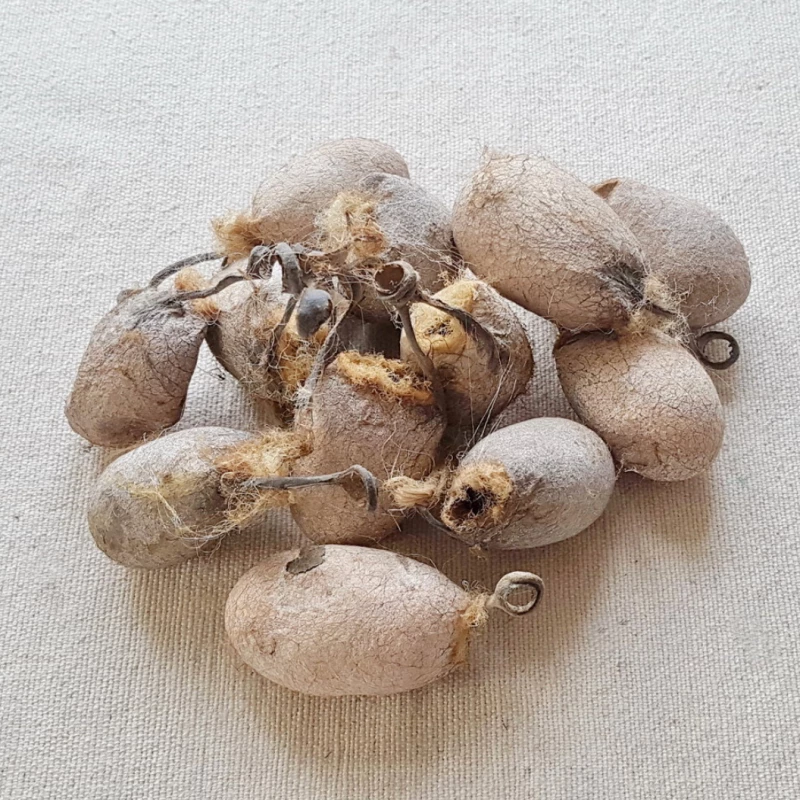
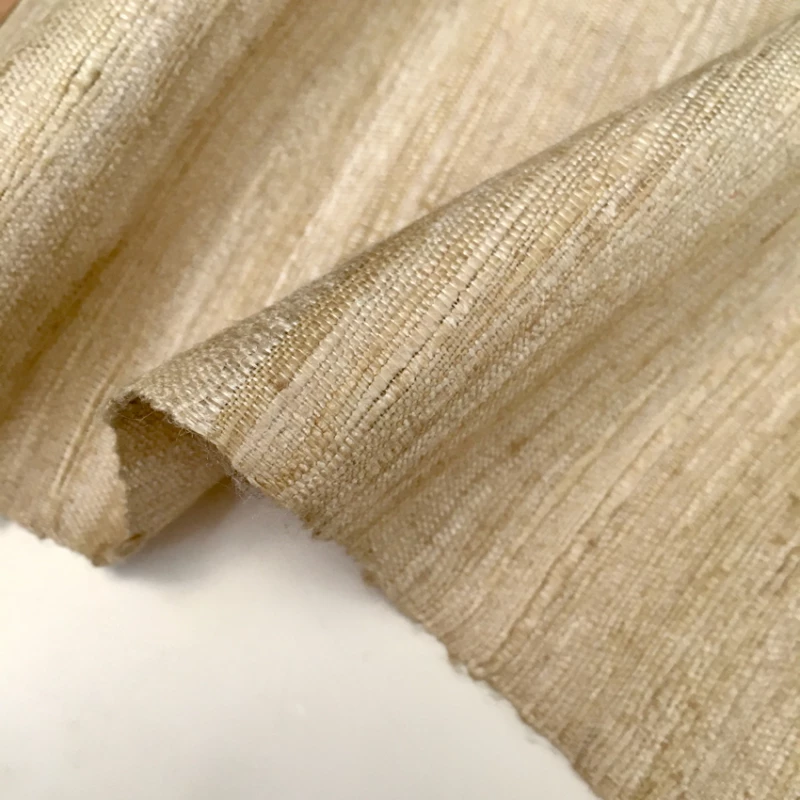
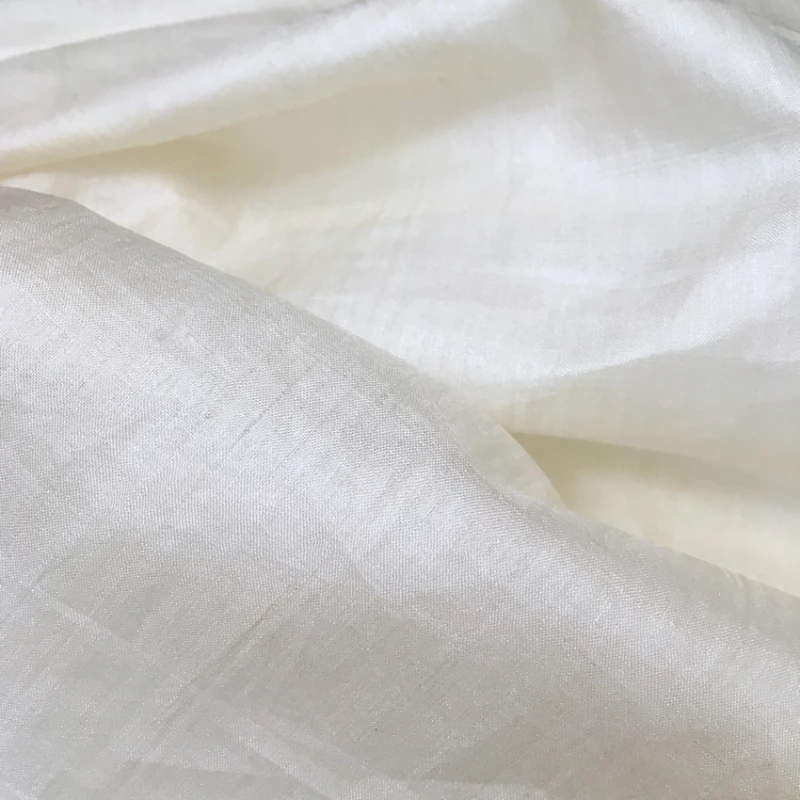
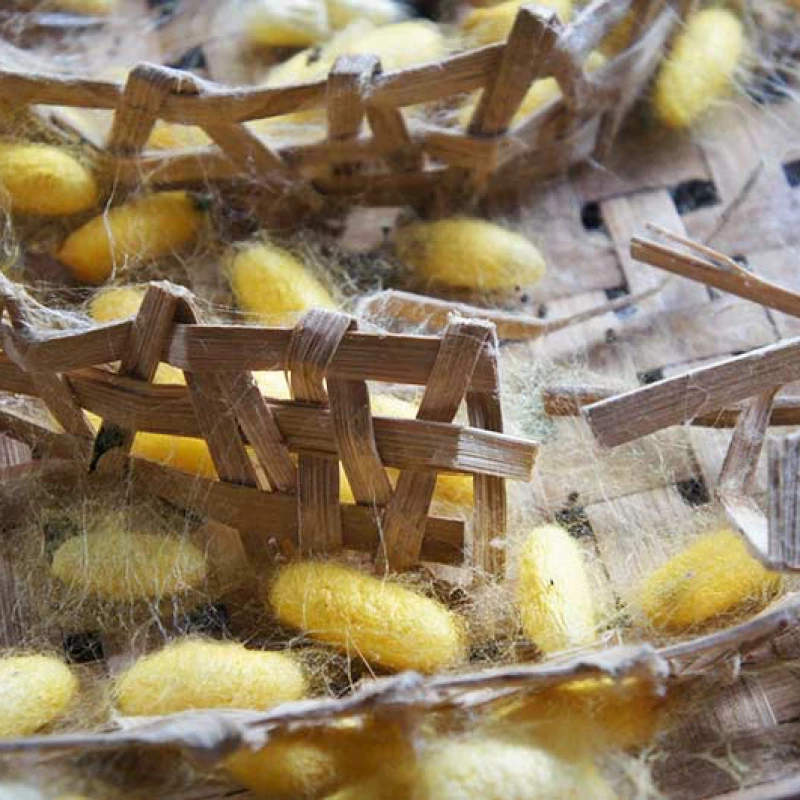
1. Tussah silk cocoons [Image: Seidentraum]
2. Soft Golden Tussah Silk
3. Paperlike Tussah Silk
4. Another species of silk in Thailand [Image: Offset Warehouse]
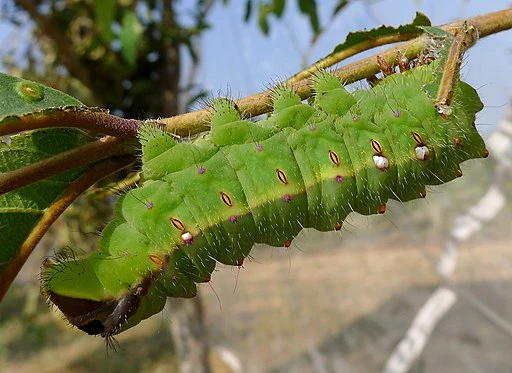
Eri silk:
Due to habitat reduction, there are a few species of silkworm that are semi-cultivated, including eri, tussah and muga silkworms. Eri silk comes from the Samia ricini silkworm, which other than Bombyx mori is also the only other domesticated species. The name comes from the Assamese (Assam, India) word "era" meaning castor as this silkworm feeds solely on the castor oil plant, though in Thailand these worms in full cultivation are also fed cassava leaves too [Wikipedia].
The cocoon is woolly and white, which creates a warm and matte silk fibre that is "cottony" in feel. As it is a staple fibre, rather than filament like other silk varieties, it is shorter for spinning and consequently has thermal properties akin to wool and cotton that also have the short staple.
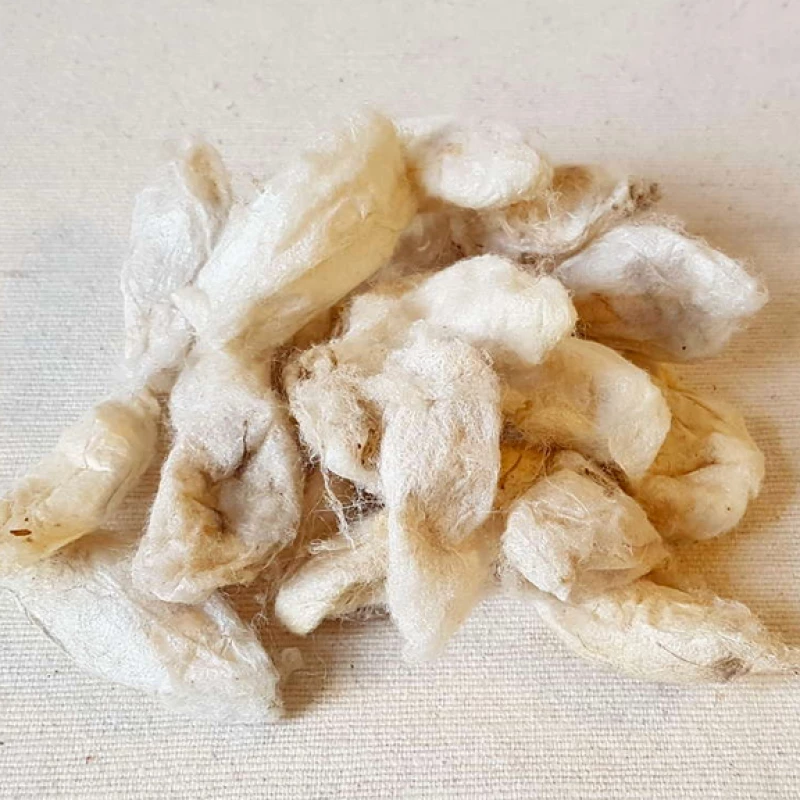
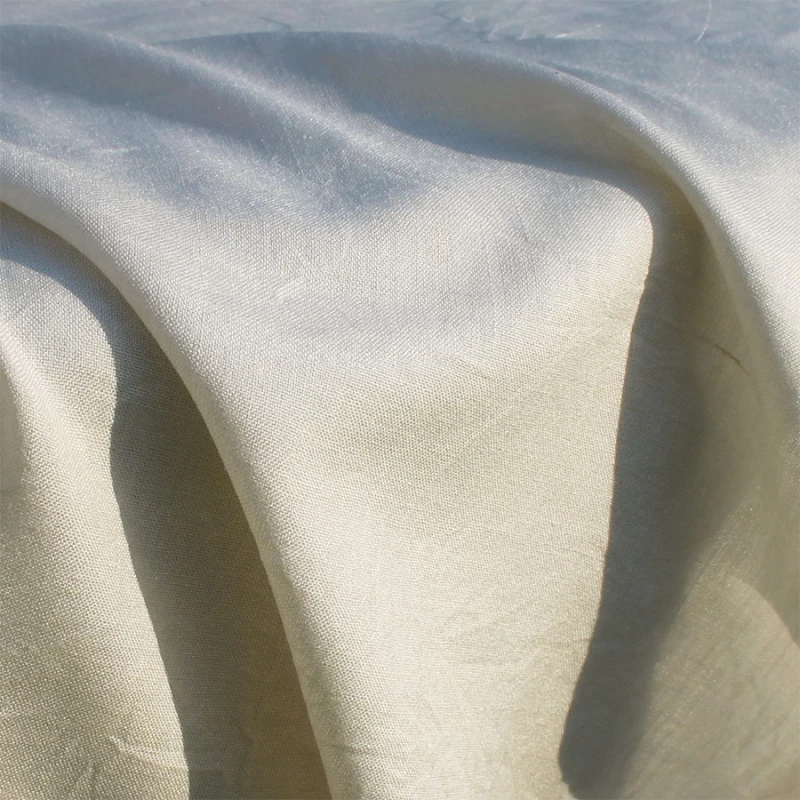
- Eri silk cocoons [Image: Seidentraum]
- Natural Draped Peace Silk
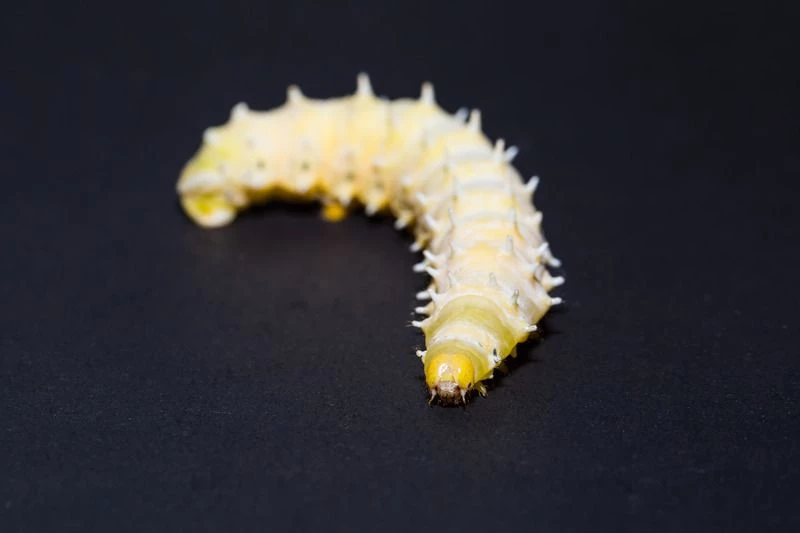
"Muga"or Assam silk:
This is a species of silkworm that is reared only in Assam, India. It is naturally yellow-golden in colour, with high durability and shimmering glossy texture [Wikipedia].
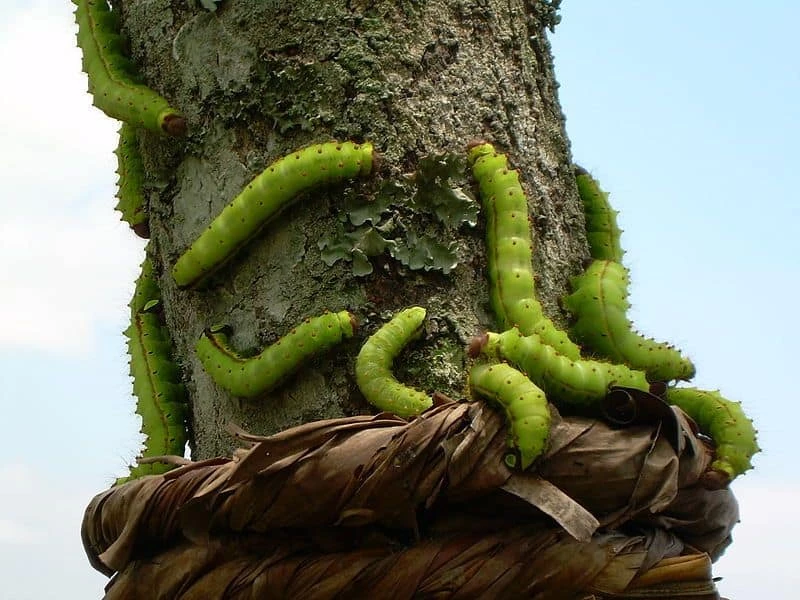
Reeled silk:
When it comes to natural reeled silk, or "muga", the moth has been allowed to complete it's full transformation naturally, emerging from the cocoon alive and able to continue with mating. The cocoons can then be hand reeled of their silk, and even if a moth has emerged pushing the silk filament aside, the hand reeling ensures a longer filament fibre. A degumming process is usually undertaken to remove the sericin gum, and so reeled silk is the only silk thread to give charmeuse satin its glowing lustre.
Our charmeuse satin in lightweight and mediumweight are both reeled, organically-cultivated mulberry silks.
Mulberry silk:
Bombyx Mori silkworms are fed solely on mulberry leaves, which offers the finest and lightest-in-colour silk quality after processing. While this comes under controversy as 'rearing in captivity', the worms are allowed a stable diet without any chemical intervention. It is not classed as a "peace silk" as this is a different process; here the moths are allowed to emerge alive from the cocoon, while mulberry silk is usually praised for how fine and long the filament fibre is. It would not therefore be suitable for vegans. That being said, you can find organic mulberry silk, as with the above option from the Hertfordshire orchard. You can also find organically-cultivated mulberry silk - it is just a case of asking the producer how they cultivate and process their silk.
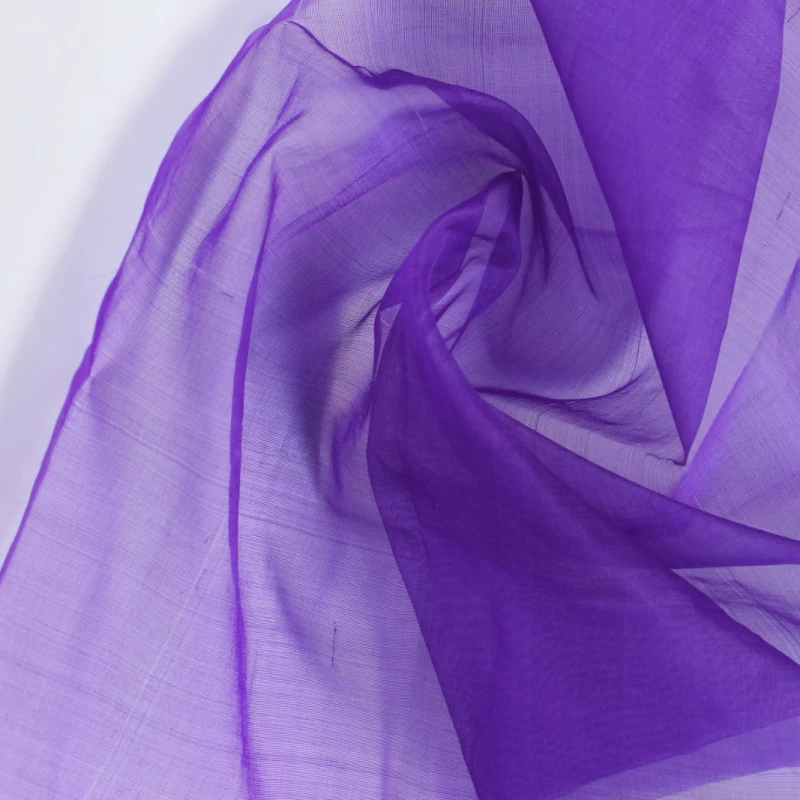
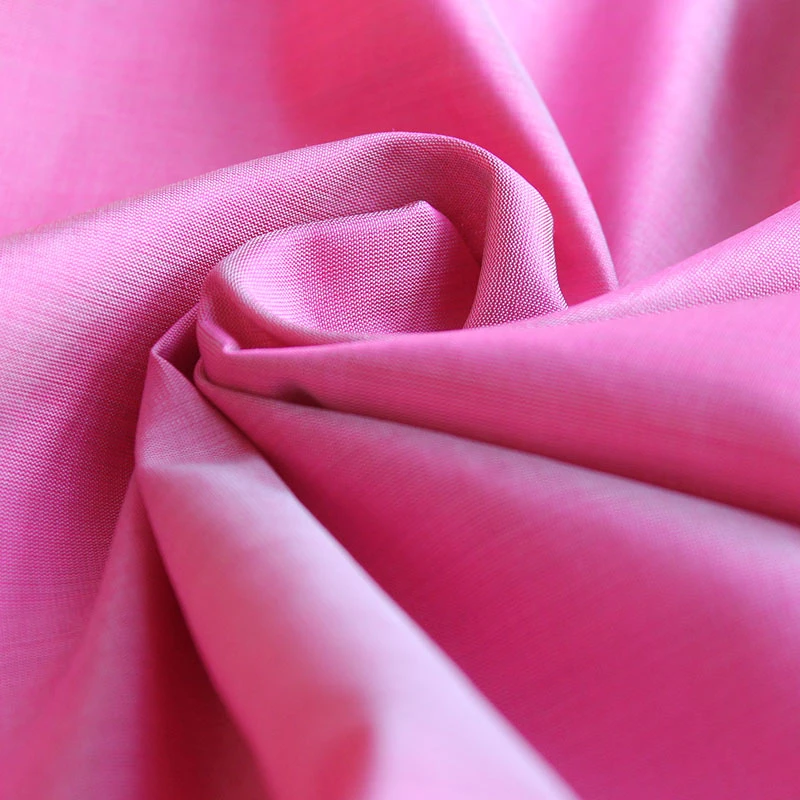
- Fair Trade Purple Silk Organza - also available in black, white and grey
- Fair Trade Carnation Pink Silk Taffeta - also available in mustard
Our Soft Pineapple Mulberry Silk is also a mulberry silk blend.
Raw or "noil" silk:
Technically any silk fibre or cloth can be left raw. "Raw" simply refers to the fact that the thread has not been processed to remove the sericin gum. The fibre and subsequently the cloth retain its stiffness, until if and when the fabric is boiled in soapy water to remove the gums (fermentation can also break down the gums). This reduces the fabric weight by up to 30%. Interestingly, this sericin gum can be captured as a byproduct and used in soaps and shampoos.
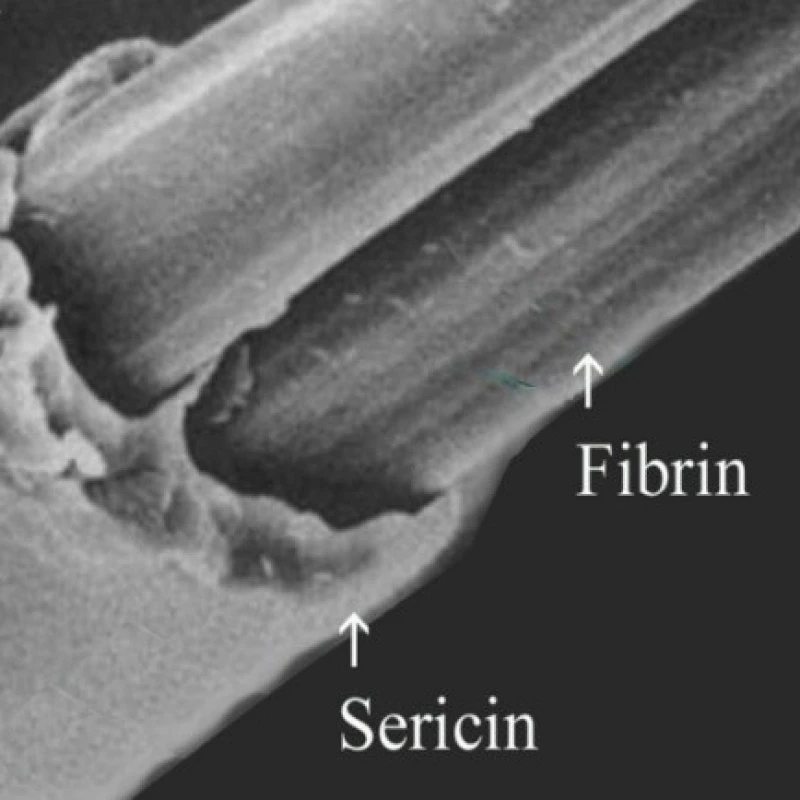
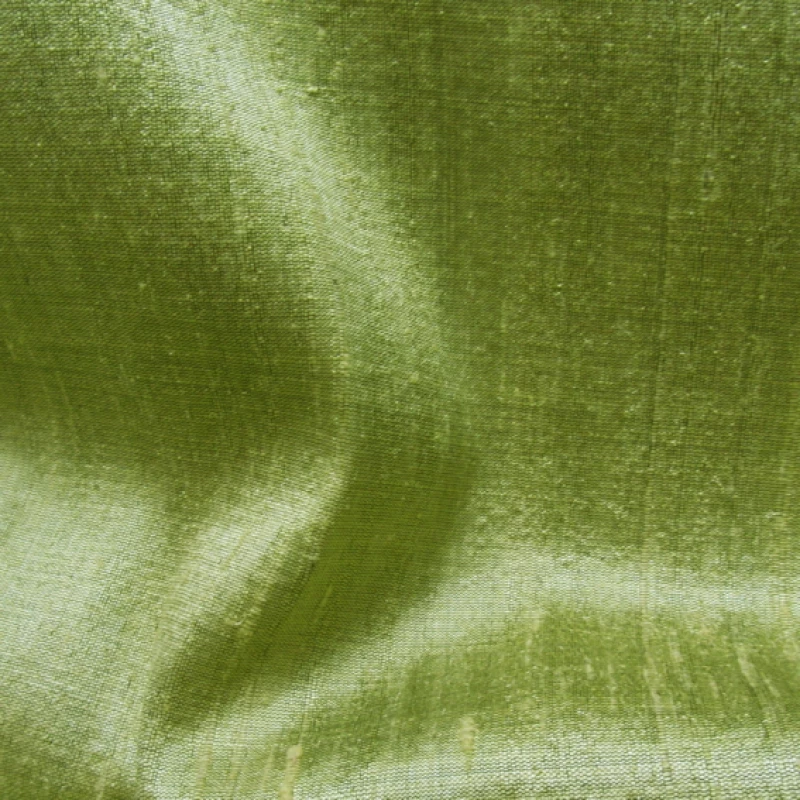
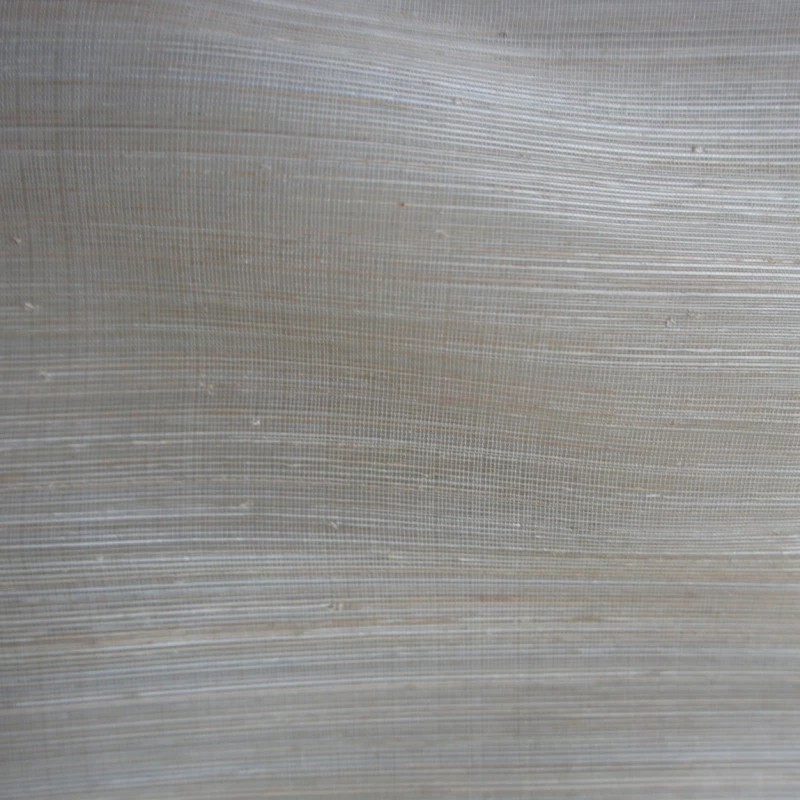
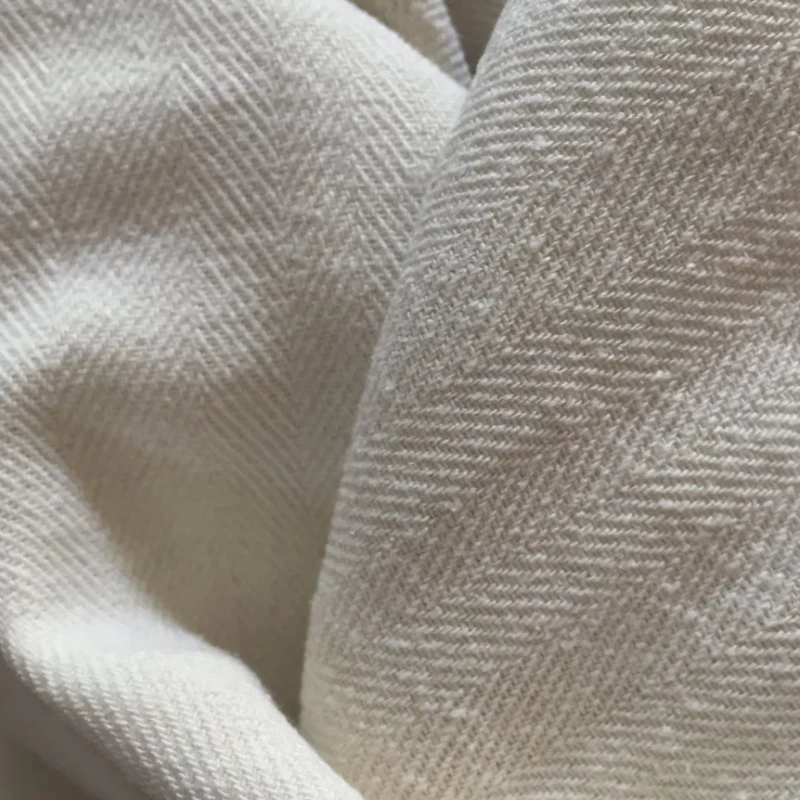
1. Microscopic view of silk thread [Image: Research Gate]
2. Fair Trade Lime Green Raw Silk
3. Structured Banana Pineapple Silk
4. Herringbone Twill Peace Silk
Spun or "matka" silk:
Spun silk is made from short lengths of fibre obtained from damaged cocoons or broken off during processing, that are then twisted together to make yarn. It can often create a slightly thicker and textured cloth because of the irregular length staples, so it is up to the spinner here to ensure the yarn is as smooth as possible - unless they are designing a fabric with irregularity in mind. It also has a matte appearance, though with a subtle lustre in the light.
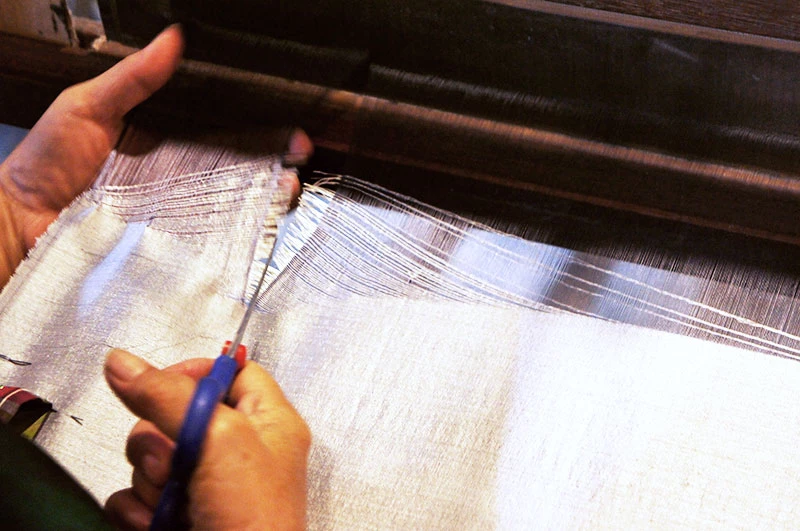
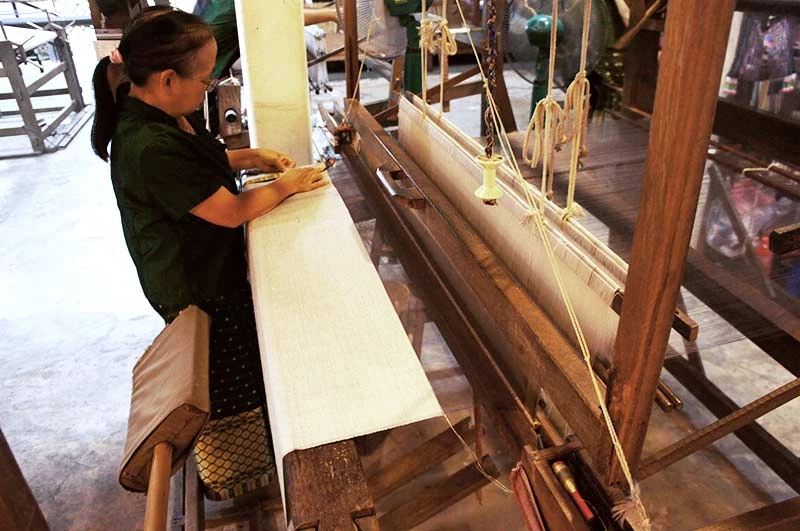
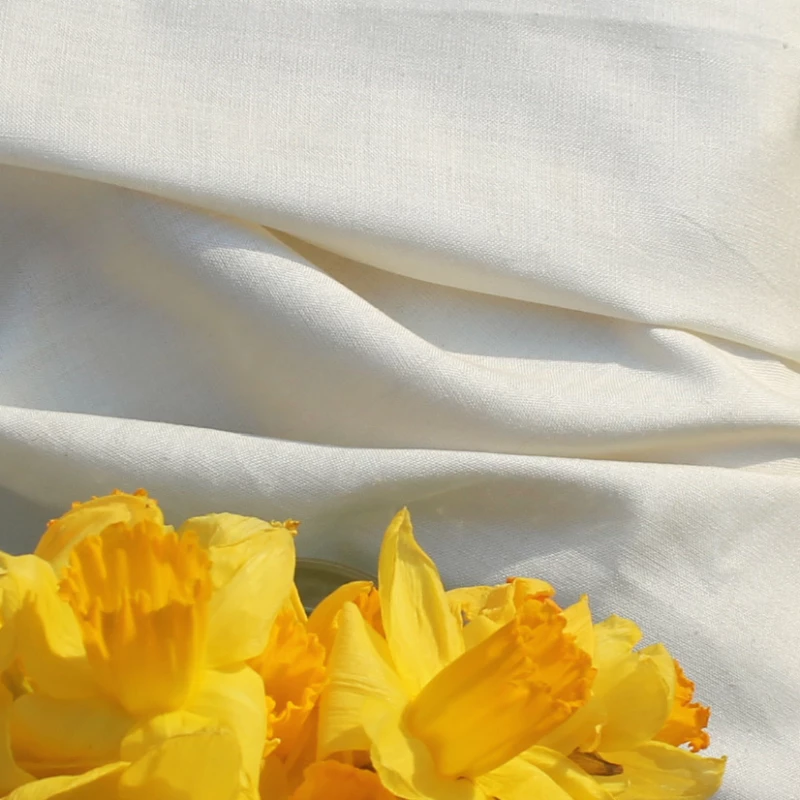
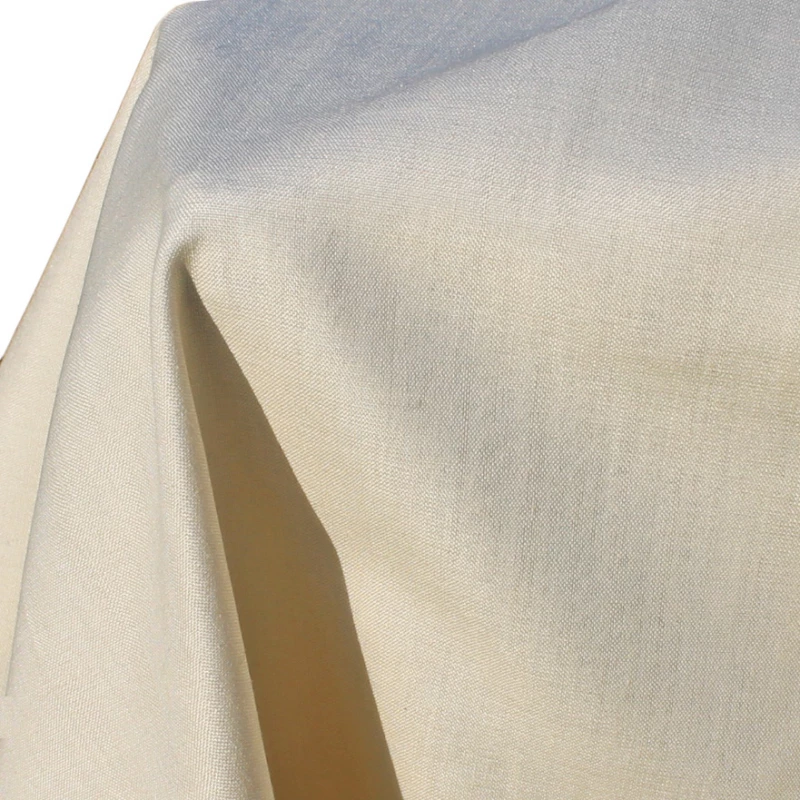
- Spun silk on the loom in Thailand [Image: Offset Warehouse]
- Spun silk on the loom in Thailand [Image: Offset Warehouse]
- Natural Spun Peace Silk
Pineapple silk:
Silk fibre can be blended with other fibres in order to build upon specific characteristics that each fibre offers. Pineapple is another ancient fibre, used commonly in The Philippines for traditional dress. It is both hardy and fine due to the skilled processing and spinning, though does well when blended with silk to provide lustre and softness to the cloth. Pineapple will age well over time, developing a patina unlike other fibres.
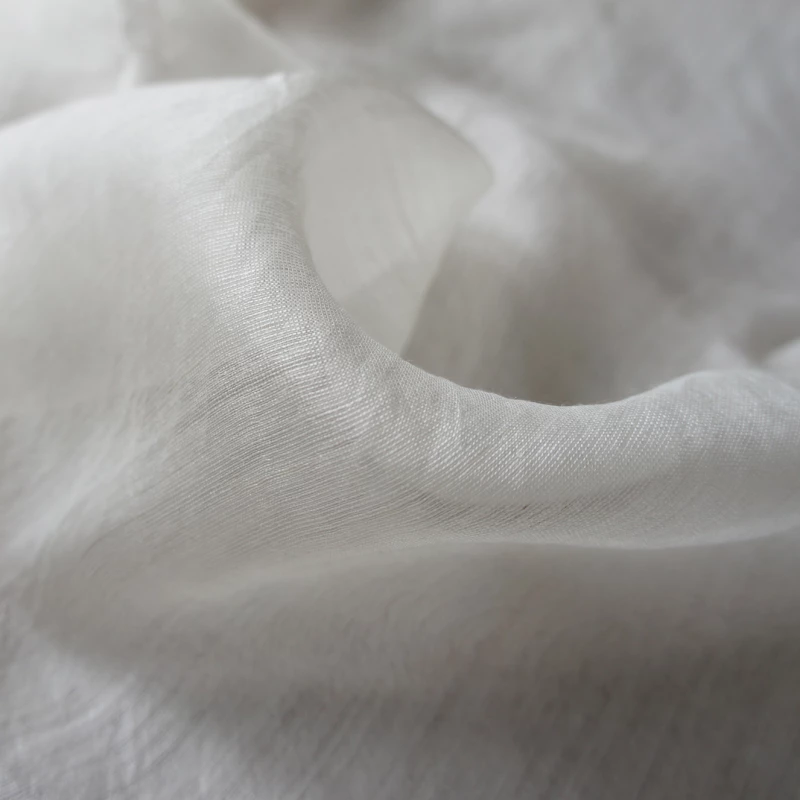
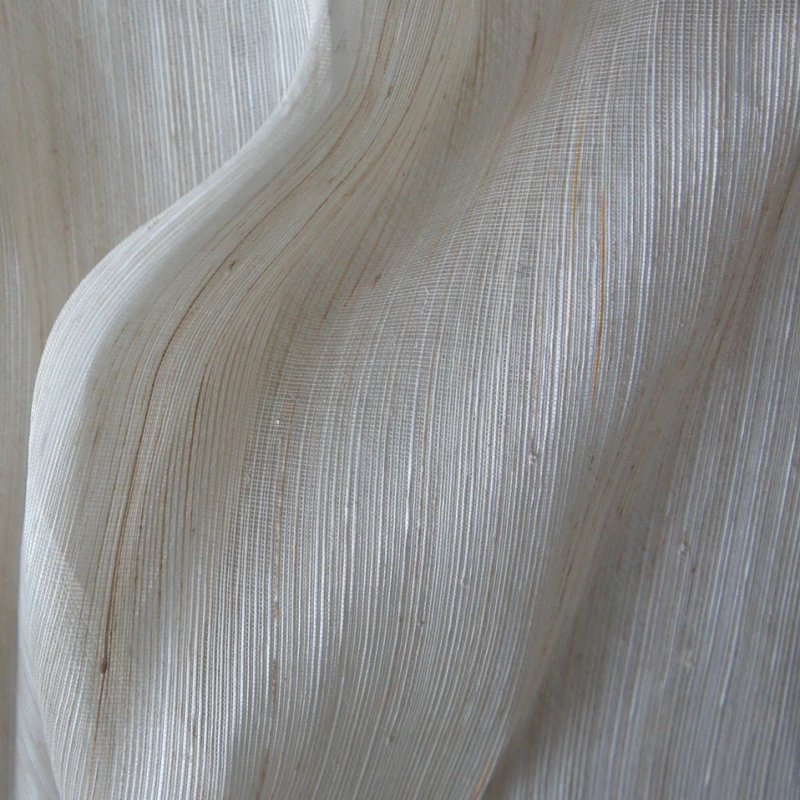
Hemp silk:
Hemp is incredibly durable, hardy and breathable. Blended with silk you get the benefit of both strong fibres, along with a lustre and a matte appearance. Our hemp silk is blended with a mulberry silk fibre that has not undergone any chemical treatments, and was grown with organic methods. It is not classed as a peace silk as it is not evident whether the silkworms are left to emerge from the cocoon, though, due to the dupion-style weave (the fabric is slubby), it does highlight that the fibres are shorter staples and so are perhaps a peace silk after all; a true mulberry silk would retain its fine and long filament.
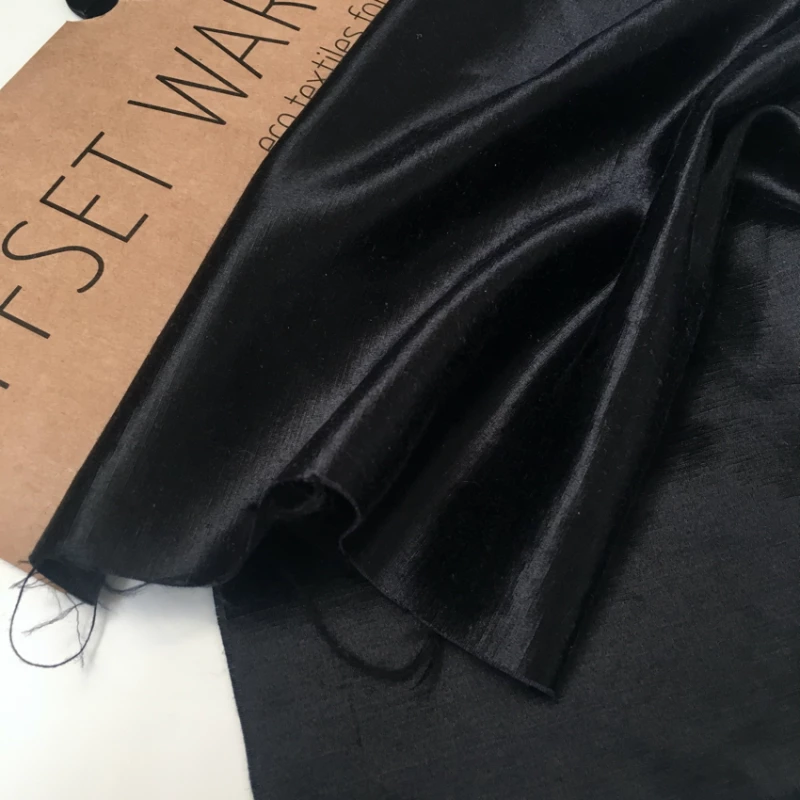
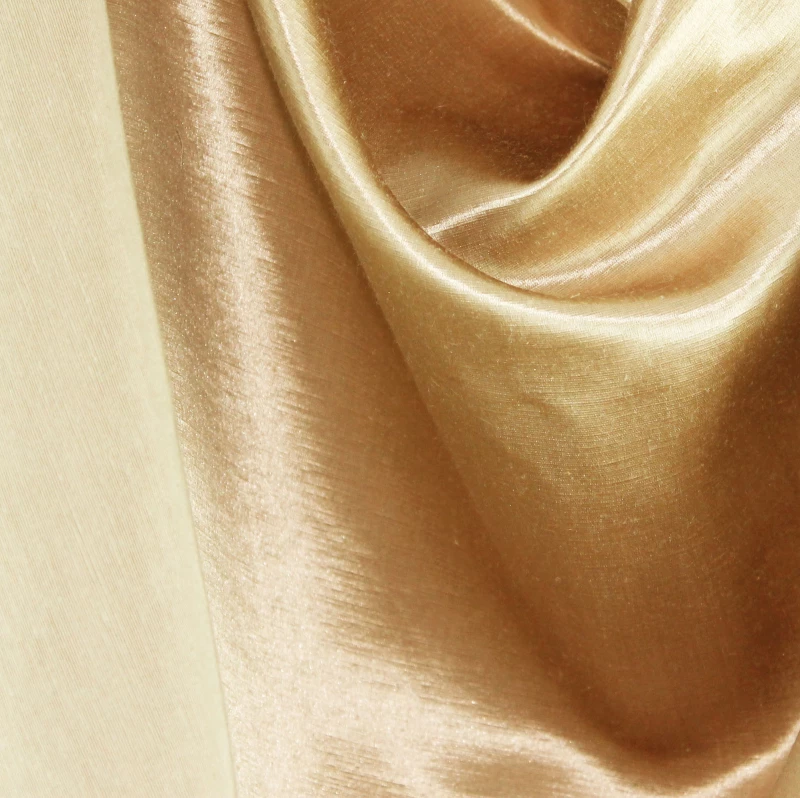
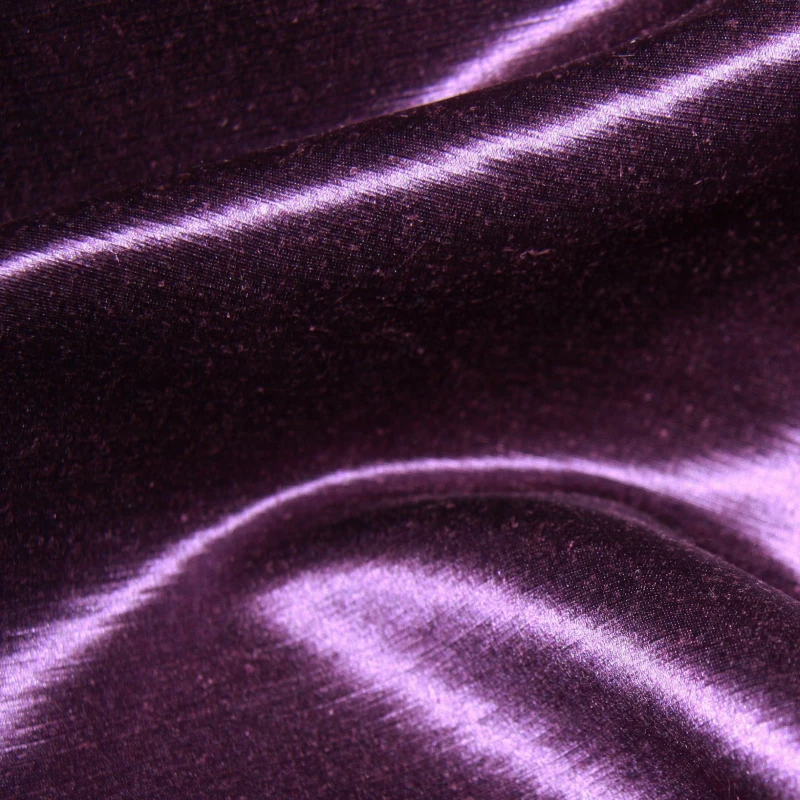
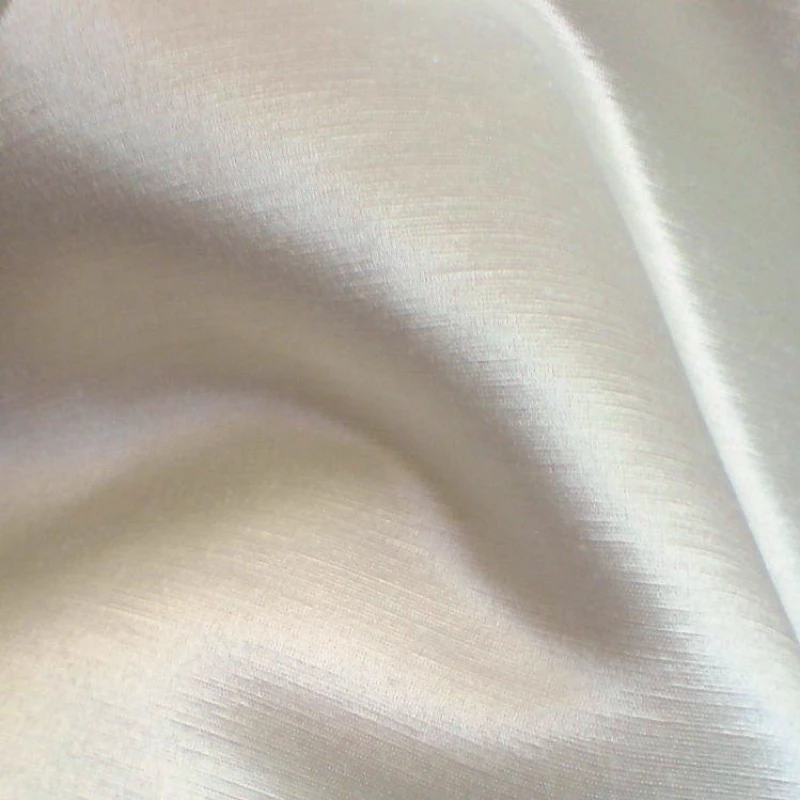
1. Hemp Silk Charmeuse Satin - Black
2. Hemp Silk Charmeuse Satin - Champagne
3. Hemp Silk Charmeuse Satin - Plum Purple
4. Hemp Silk Charmeuse Satin - Natural
Spider silk:
With an increase in vegan attitudes and awareness of ethics involved in taking fibre from live beings, there are laboratory-based innovations attempting to shift our demand onto something more ethical and sustainable. Silk production does take up land in how many mulberry leaves are required to sustain a caterpillar's life. With spider silk, the gene from a spider is inserted into the genome of a silkworm. The silkworm will then produce a stronger and more elastic thread than it would do naturally. This caterpillar is then bred to create a new species.
Spider silk can also be produced in a lab, through bioengineering. The gene is inserted into yeast, which is then fermented with sugar and water to increase the available protein amount. The silk protein is isolated, spun into fibres in a similar process to rayon, and then woven as normal [Bolt Threads MicroSilkTM]. Read how this first started being developed back in 2016 [Offset Warehouse].
It has also been produced by simply touch a spider's abdomen, which causes them to create their silk. The spiders were positioned to create a warp, and from this the threads were woven as shown here in this video from the V&A.
There's even mussel silk, as explained in our article from 2015 [Offset Warehouse].
But what do I choose?
- Animal welfare - wild or peace silk
- Low-impact production - wild or tussah silk
- Consistent appearance - mulberry silk
- Pure or almost whites, or ready for dyeing - mulberry silk
- Natural appearance - tussah, matka or raw silk
- Matte appearance - best to avoid mulberry and go for eri, noil (raw) and some tussah
- Guaranteed organic cultivation - certified organic silk
- Hardy blends - hemp, cotton or wool blends
- Fibre with natural patina - wild silk, or pineapple silk blends
- Animal free - bioengineered silk, or look at sustainably-sourced viscose
Thank you for reading! If you are interested in learning more about how you can implement responsible strategies into your business, or would like to dive deeper into ethical and sustainable textiles, perhaps you would like to join The Sustainable Fashion Collective.
We also have a bi-monthly newsletter where you can find out directly about what new fabrics we have coming in.
